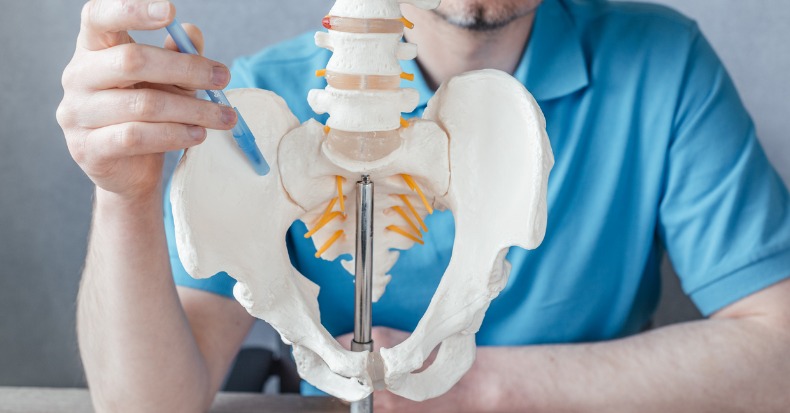While low back pain can affect people of all ages, it’s particularly problematic for older adults and is one of the top three reasons they see a doctor. Despite this, low back pain among seniors often persists for longer than three months, and in the presence of multiple comorbidities (which is often the case with […]
Consider Chiropractic Care for Post-Surgical Spine Pain
While treatment guidelines recommend exhausting conservative approaches—such as chiropractic care—before considering surgery, this doesn’t always happen. In fact, hundreds of thousands of surgeries for low back-related conditions are performed each year in the United States alone, and it’s estimated that—depending on the criteria used—between 4% and 50% of patients may continue to report ongoing low […]
Low Back Pain and Movement Quality
When patients present with low back pain (LBP), they usually move slowly, and they often can’t stand up straight. Even a simple task such as bending over may cause them to grimace and even require the use of their hands pushing on their thighs to return upright. These are classic signs of lumbar instability to […]
When Is Low Back Surgery Appropriate?
Low back pain is the most common musculoskeletal complaint, and it is the leading cause of activity limitation and absenteeism from work. There are many treatment options available to the low back pain patient, including surgical procedures. But when is surgery appropriate and in what cases should it be avoided? Generally, clinical guidelines don’t recommend […]
Greater Access to Chiropractic Reduces Low Back Pain Costs
Not only is low back pain a musculoskeletal condition that will affect nearly everyone at least once in their lifetime, but it also accounts for a significant portion of all healthcare expenditures. When an individual experiences low back pain, they have a variety of treatment options, including chiropractic care. While there is an abundance of […]
Low Back Pain and the Sacroiliac Joint
The sacroiliac joints (SIJ) sit between the sacrum (tailbone) and ilium (pelvis), which serve to connect the spine and pelvis and facilitate load transfer from the low back to the lower extremities. Generally, when we consider the cause of a patient’s low back pain, the first place investigated is the lumbar spine. But as it […]
Exercises to Prevent Sports-Related Back Pain
According to a systematic review that included 201 studies, low back pain may affect between 10-67% of athletes at any given moment, with anywhere from 17-94% experiencing sports-related back pain each year. This broad range is due to the age, level of competition, and the specific sports included in each study. For example, the data […]
Core Stabilization Exercises for Chronic Low Back Pain
In addition to manual therapies and other treatments provided in a chiropractic office, patients with chronic low back pain are often advised to exercise—specifically the core muscles—as part of the recovery process. Is there a protocol that’s best for engaging the core muscles? In 2018, researchers recruited 34 chronic low back pain patients and assigned […]
Motor Control, Spinal Stability, and Low Back Pain
In a chiropractor’s ideal world, people would do everything possible to reduce their risk for a condition like low back pain, and in the event a low back injury occurs, they’d seek care right away. Barring any red flags that necessitate a referral to a specialist or a trip to the emergency room, the patient […]
Mid-Back Pain and Its Causes
The thoracic portion of the spine the longest part of the spine and is made up of twelve vertebrae (T1-T12), which lies between the cervical spine (C1-C7) and the lumbar spine (L1-L5). The thoracic spine protects the very important spinal cord that begins in the brain and runs down to approximately T12 where the cord […]
- « Previous Page
- 1
- 2
- 3
- 4
- 5
- …
- 24
- Next Page »









